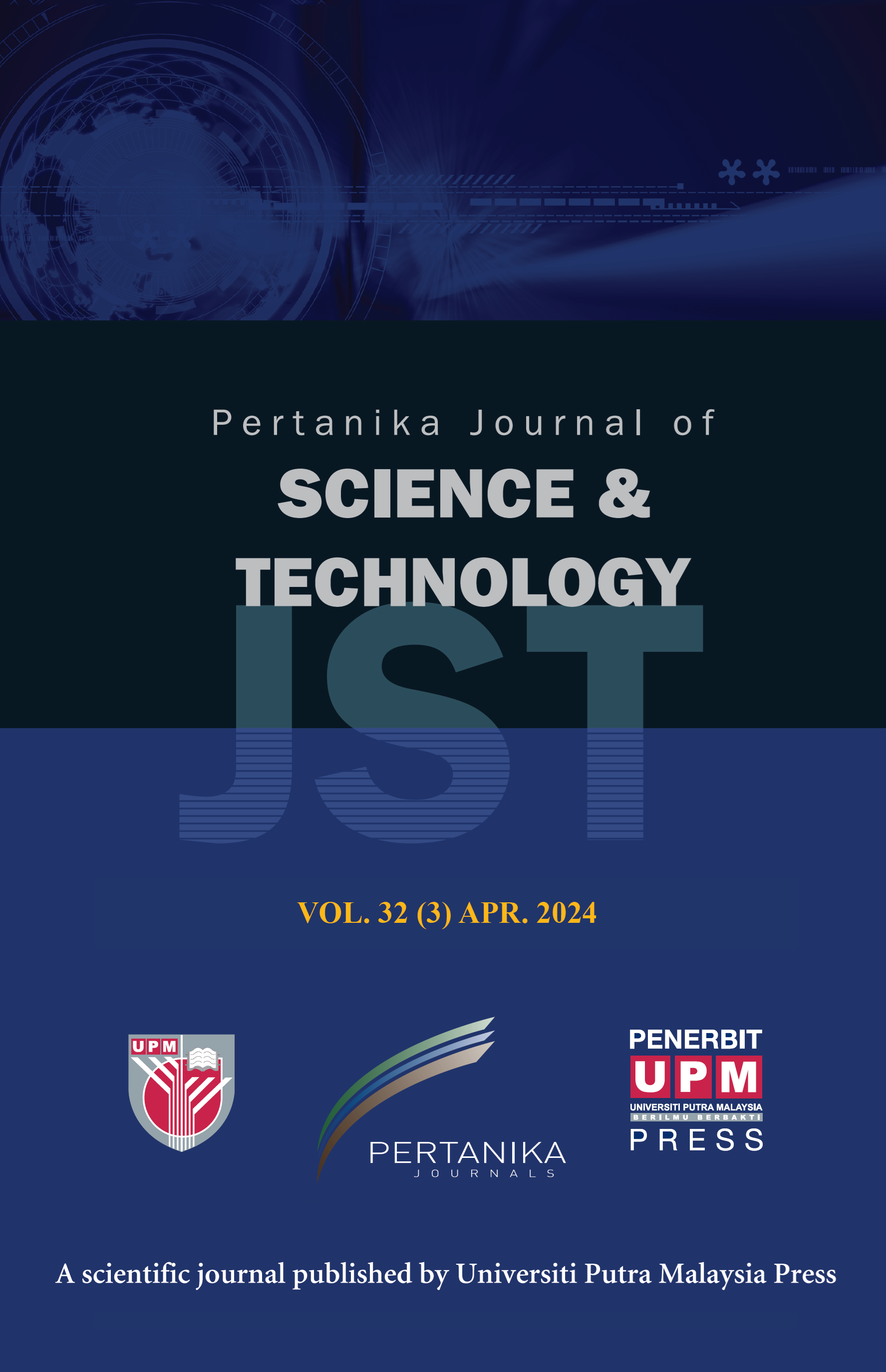PERTANIKA JOURNAL OF SCIENCE AND TECHNOLOGY
e-ISSN 2231-8526
ISSN 0128-7680
J
J
Pertanika Journal of Science & Technology, Volume J, Issue J, January J
Keywords: J
Published on: J
J
-
Akram, U., Drabble, J., Cau, G., Hershaw, F., Rajenthran, A., Lowe, M., Trommelen, C. & Ellis, J. (2020). Exploratory study on the role of emotion regulation in perceived valence, humour, and beneficial use of depressive internet memes in depression. Scientific Reports, 10, Article 899. http://doi.org/10.1038/s41598-020-57953-4
-
Ballesteros Doncel, E. (2016). “Circulación de memes en WhatsApp: Ambivalencias del humor desde la perspectiva de género” [Circulation of memes on WhatsApp: Ambivalences of humor from a gender perspective]. Empiria. Revista de Metodología de las Ciencias Sociales, 35, 21-46. https://doi.org/10.5944/empiria.35.2016.17167
-
Benaim, M. (2018). From symbolic values to symbolic innovation: Internet-memes and innovation. Research Policy, 47(5), 901-910. https://doi.org/10.1016/j.respol.2018.02.014
-
Berger, J., & Milkman, K. L. (2012). What makes online content viral? Journal of Marketing Research, 49(2), 192–205. https://doi.org/10.1509/jmr.10.0353
-
Blackmore, S. (2000). The meme machines. Oxford University Press. https://www.researchgate.net/publication/220327365_The_Meme_Machine
-
Bolshakov, A. (2020, July 23). Expert zayavil ob okonchanii “koronavirusnogo” azhiotazha vorkug grechki [An expert stated the end of the buckwheat coronavirus hype]. Interfax. https://www.interfax.ru/russia/718674
-
Brier, S. (2008). Cybersemiotics: Why information is not enough. University of Toronto Press. https://muse.jhu.edu/book/106063
-
Cannizzaro, S. (2016). Internet memes as internet signs: A semiotic view of digital culture. Sign Systems Studies, 44(4), 562-586. https://doi.org/10.12697/SSS.2016.44.4.05
-
Corriere della Sera. (2020, March 21). De luca: Feste di laurea? vi mandiamo i carabinieri col lanciafiamme [De Luca: Graduation parties? we send you the carabinieri with flamethrowers] [Video]. YouTube. https://www.youtube.com/watch?v=moavLoGNQwk
-
Dawkins, R. (1976). The selfish gene. Oxford University Press. https://books.google.ru/books?hl=it&lr=&id=ekonDAAAQBAJ&oi=fnd&pg=PP1&ots=kD8_W-n4Ey&sig=4gc6djVKBoqVeNu4Nbu_SgFXJuY&redir_esc=y#v=onepage&q&f=false
-
Denisova, A. (2019). Internet memes and society: Social, cultural and political contexts. New York: Routledge. http://doi.org/10.4324/9780429469404
-
Dennett D. C. (2007). Breaking the spell. Penguin Books. https://doi.org/10.5040/9781350227323.0016
-
Doncel, E. B. (2016). “Circulación de memes en WhatsApp: Ambivalencias del humor desde la perspectiva de género” [“Circulation of memes on WhatsApp: Ambivalences of humor from a gender perspective”]. EMPIRIA. Revista de Metodología de las Ciencias Sociales, 35, 21-45. https://doi.org/10.5944/empiria.35.2016.17167
-
Dynel, M., & Poppi, F. I. M. (2020). Caveat emptor: Boycott through digital humor on the wave of the 2019 Hong Kong protests. Information, Communication & Society, 24(15), 2323-2341. http://doi.org/10.1080/1369118X.2020.1757134
-
Dynel, M. (2021). COVID-19 memes going viral: On the multiple multimodal voices behind face masks. Discourse & Society, 32(2), 175–195. https://doi.org/10.1177/0957926520970385
-
Gazzetta Ufficiale della Repubblica Italiana. (2020). Decreto del presidente del consiglio dei ministri 26 aprile 2020 [Decree of the president of the council of ministers 26 April 2020]. https://www.gazzettaufficiale.it/eli/id/2020/04/27/20A02352/sg
-
Hakoköngäs, E., Halmesvaara, O., & Sakki, I. (2020). Persuasion through bitter humor: Multimodal discourse analysis of rhetoric in internet memes of two far-right groups in Finland. Social Media + Society, 6(2). http://doi.org/10.1177/2056305120921575
-
Harvey, A., Thompson, S., & Coolidge, F. L. (2019). Fear and derision: A quantitative content analysis of provaccine and antivaccine internet memes. Health Education & Behavior, 46(6), 1012-1023. https://doi.org/10.1177/1090198119866886
-
Hoffmeyer, J. (2008). From thing to relation: On Bateson’s bioanthropology. In J. Hoffmeyer (Ed.), A legacy for living systems: Gregory bateson as precursor to biosemiotics (pp. 27-44). Springer. https://doi.org/10.1007/978-1-4020-6706-8_3
-
Kalkina, V. (2020). Between humour and public commentary: Digital re-appropriation of the soviet propaganda posters as internet memes. Journal of creative communications, 15(2), 131-146. http://doi.org/10.1177/0973258619893780
-
Kassing, J. W. (2020). Messi hanging laundry at the Bernabeu: The production and consumption of Internet sports memes as trash talk. Discourse Context & Media, 34, Article 100320. http://doi.org/10.1016/j.dcm.2019.100320
-
Lotman, Y. M. (2000). Universe of the mind: A semiotic theory of culture. Indiana University Press. https://monoskop.org/images/5/5e/Lotman_Yuri_M_Universe_of_the_Mind_A_Semiotic_Theory_of_Culture_1990.pdf
-
Moiseenko, L.V. (2015). Internet-mem kak edinitsa socialno-kulturnogo kontenta [Internet-mem as a unit of socio-cultural content]. Bulletin of Moscow State Linguistic University. Humanities, 27(738), 104-114.
-
Nowotny. J., & Reidy J. (2022). Memes-formen und folgen eines internetphänomens [Memes - Forms and consequences of an internet phenomenon]. Transcript Open. https://doi.org/10.14361/9783839461242
-
Pettis, B. T. (2022). Know your meme and the homogenization of web history. Internet Histories, 6(3), 263–279. https://doi.org/10.1080/24701475.2021.1968657
-
Ross, A. S., & Rivers, D. J. (2019). Internet memes, media frames, and the conflicting logics of climate change discourse. Environmental Communication, 13(7), 975-994. https://doi.org/10.1080/17524032.2018.1560347
-
Rushkoff, D. (1996). Media virus! hidden agendas in popular culture. Ballantine Books.
-
Skjulstad, S. (2020). Vetements, memes, and connectivity: Fashion media in the era of Instagram. Fashion Theory, 24(2), 181-209. https://doi.org/10.1080/1362704X.2018.1491191
-
Strana poshla na popravki: Tol’ko memy — o tom, kak Sobyanin otmenil karantin i takoy r-r-raz, pobedil koronavirus [The country has started to improve: Only memes - about how Sobyanin lifted the quarantine and how, rrrr, the coronavirus was defeated]. (2020, June 8). Meduza. https://meduza.io/shapito/2020/06/08/strana-poshla-na-popravki
-
Tiron, E. (2007, July 13). Mem – eto “virus uma”[Mem is a “mind virus”]. Advertology. http://www.advertology.ru/article72035.htm
-
van Dijck, J. (2009). Users like you? Theorizing agency in user-generated content. Media, Culture & Society, 31(1), 41–58. https://doi.org/10.1177/0163443708098245
-
Villi, M., & Noguera-Vivo, J.-M. (2017). Sharing media content in social media: The challenges and opportunities of user-distributed content (UDC). Journal of Applied Journalism and Media Studies, 6(2), 207-223. https://doi.org/10.1386/ajms.6.2.207_1
-
Waddock, S. (2015). Reflections: Intellectual shamans, sensemaking, and memes in large system change. Journal of Change Management, 15(4), 259-273. https://doi.org/10.1080/14697017.2015.1031954
-
Wood, M. A. (2020). Policing’s ‘meme strategy’: Understanding the rise of police social media engagement work. Current Issues in Criminal Justice, 32(1), 40-58. http://doi.org/10.1080/10345329.2019.1658695
-
Zunino, C. (2020, May 13). Scuola, Azzolina: “Si può bocciare se lo studente è troppo carente” [School, Azzolina: “You can fail if the student is too deficient”]. La Repubblica. https://www.repubblica.it/scuola/2020/05/13/news/terza_media_azzolina_scuola-256498705/
ISSN 0128-7680
e-ISSN 2231-8526




